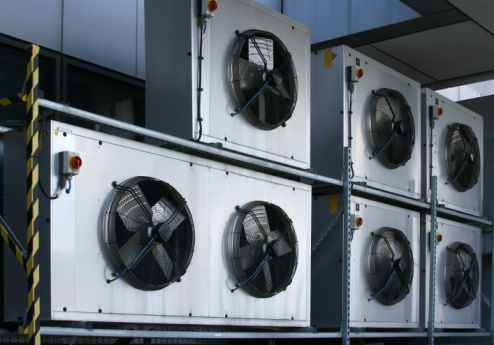Before we know it, summer will be here. We already see that the days are getting longer and the temperature is gradually rising. While here in Denver, we all know that spring months bring us unusual weather with a lot of snow, but it is still the time to prepare your commercial HVAC system for the approaching warmer months. With spring around the corner, facility managers should be focused on spring cleaning and that includes ensuring your soon-to-be running air conditioners are ready for the impending summer heat. We have some steps for getting your building HVAC ready for the summer months.
When we look at commercial air conditioner failures, more than 50% are the result of improper cleaning, or worse, failure to clean their systems at all. As such, you should consider getting your facility’s HVAC system set up for a proper spring cleaning to get it ready.
Commercial HVAC Checklist for summer
- Check the Condenser Unit: The first step is looking around the condensing coil and removing leaves and other debris that build up in the winter months. Once you do that, you will want to straighten any bent coils and clean them with some soapy water.
- Check the Wiring: In Colorado, we do have rodents that like to chew on wiring. So, be sure to check for any damage. Start by shutting down the power to your system to avoid electrocution. Then look around for signs such as burnt wiring or even rodent nests. Any loose connections or shorts from rodents chewing through wire insulation can be a fire hazard, so you need to repair any damage before putting your cooling system in to service.
- Refrigerant: Ideally you will never have to replace refrigerant as, unlike your car, air conditioners do not consume refrigerant. But, if your levels are low, your air conditioners will not operate efficiently and it likely means you have a leak somewhere that is causing refrigerant to escape. Seals and gaskets do dry out in the winter months due to inactivity, so take a little time to check them for possible leaks.
- Drain Lines: Check the indoor drain line and remove any blockages. Over the winter months, these drain lines can fill with mold and mineral deposits.
- Blower Fan: The air moving power comes from the blower fan. So, ensure the fan is cleaned (or even replaced) as it can become clogged with dirt, hair, debris, and dust all of which will restrict air flow. If your blower fan is clogged and struggling, your entire system will not run efficiently.
- Clean the Evaporator Coils: The evaporator coils can become filled with dust. When that happens, the air flow speed is reduced and the evaporator cannot get rid the cold air fast enough. The coils will then freeze over and turn into a block of ice, making them inoperable until the ice melts.
- Replace the Filters: Change out all the filters and inspect the indoor coil and blower for dust and debris. Clean filters will allow for better air movement so cooling a space will happen faster while using less electricity. Not to mention, they help reduce dust on the blower and help keep the air in your facility cleaner.
How to Use This Information
When it comes to your commercial facility and keeping your tenants comfortable, we can help. With our ongoing facility comfort assurance program or system replacement and repair, we can ensure your heating and cooling systems are operating efficiently. Schedule an appointment or call 303-424-1622 for a free systems evaluation.

